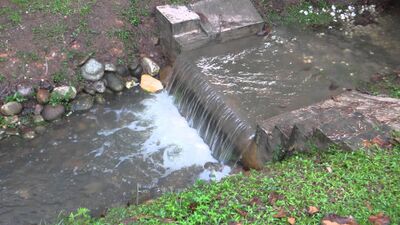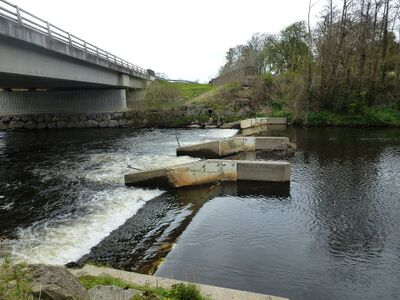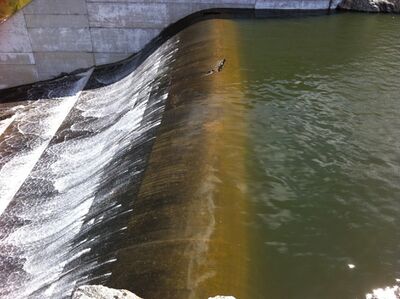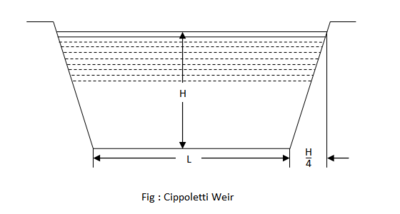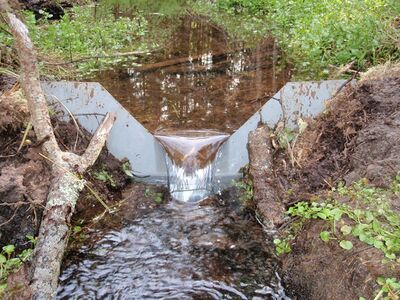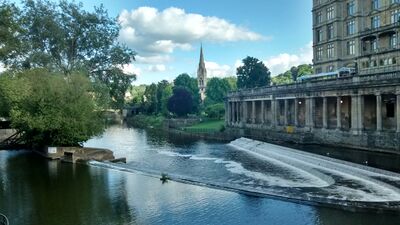1D Weirs
Page Under Construction
Introduction
A weir is a barrier across a designated flow path that is designed to alter flow characteristics. Most common weirs act as an obstruction, smaller but similar to a dam, that pools water behind it while allowing water to steadily flow over the top. Weirs within TUFLOW, like bridges, do not require data for length, Manning's n, divergence or bed slope so they are zero-length channels effectively.
Weir types that can be used within TUFLOW
- Broad-crested weir
Broad Crested weirs are commonly used to measure the discharge of large rivers and canals.
- Crump weir
The Crump Weir models a triangular profile weir with a 1:2 sloping front face and a 1:5 sloping back face. This type of weir are used as measuring structures within open channel.
- Ogee-crested weir
An ogee-crested weir is a special type of weir, generally used as a spillway of a dam as shown in figure. The crest of an ogee weir slightly rises up from the inside edge (i.e., a slight hump on top of the weir) and falls in a parabolic form over the edge of the weir.
- Rectangular weir (sharp crested)
Sharp crested weirs are used to measure discharge in small rivers and canals.
- Trapezoidal or Cippoletti weir
The "Cippoletti" weir is a trapezoidal shaped weir. The purpose of the slope, on the sides, is to obtain an increased discharge through the triangular portions of the weir, which otherwise would have been decreased due to end contractions in the case of rectangular weirs.
- V-notch weir
V-notch weirs are typically installed in open channels to determine discharge. The basic principle is that discharge is directly related to the water depth above the bottom of the V. The V-notch design causes small changes in discharge to have a large change in depth allowing more accurate head measurement than with a rectangular weir.
- Spillway
Irregular shaped weirs
- under construction
Operational Control
- under construction
Typical check files used
- under construction
Any further questions please email TUFLOW support: support@tuflow.com
Back to 1D Hydraulic Structures
